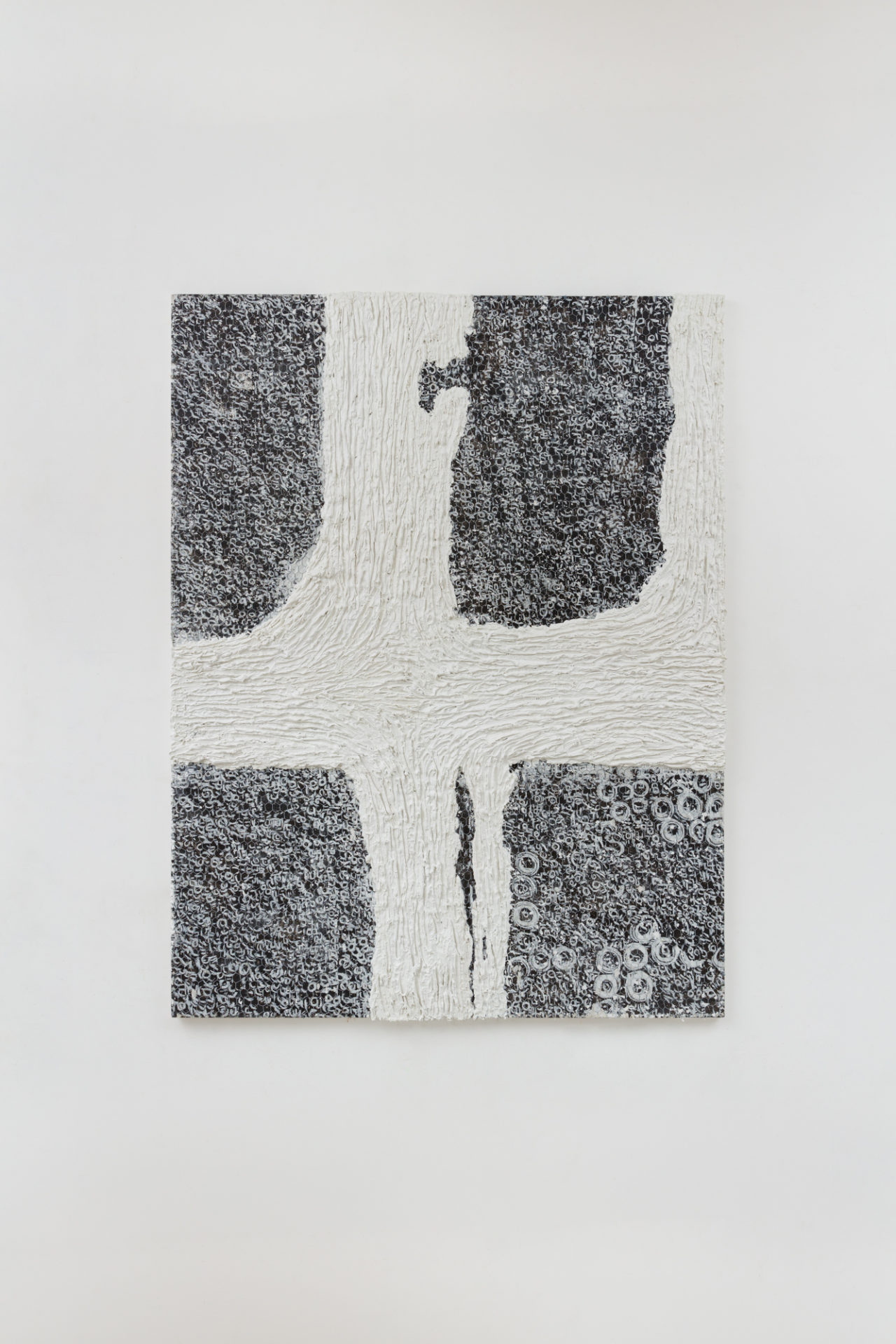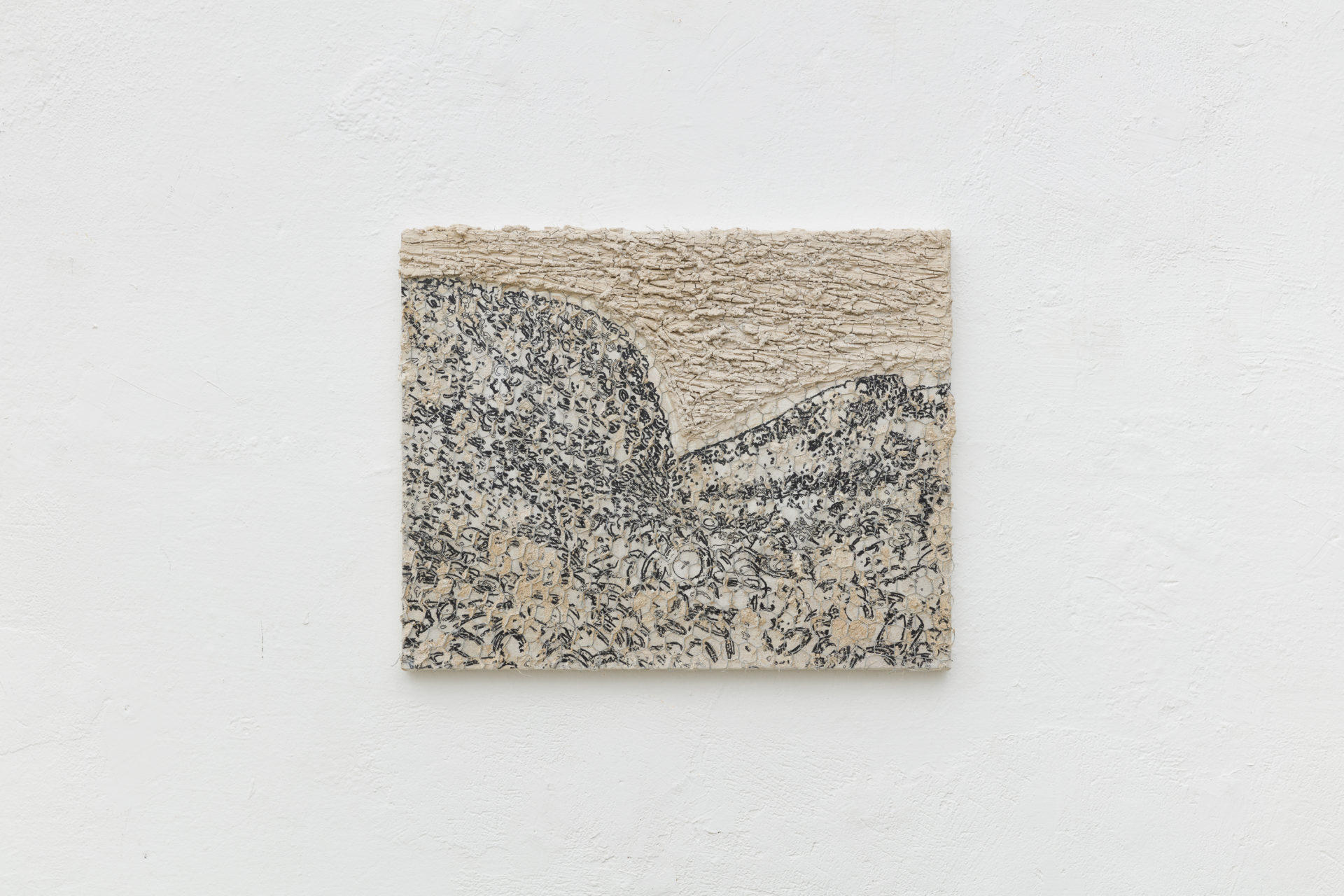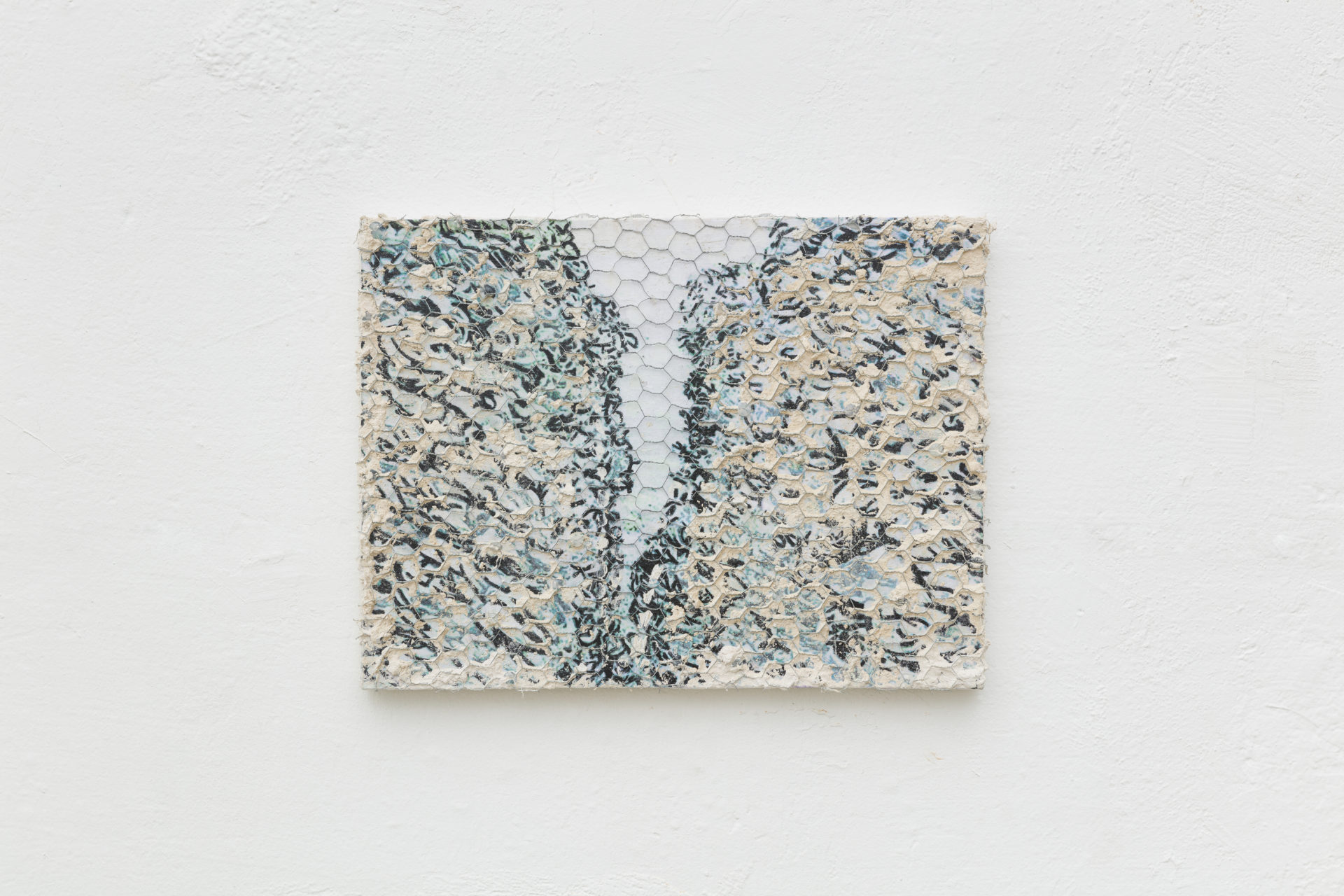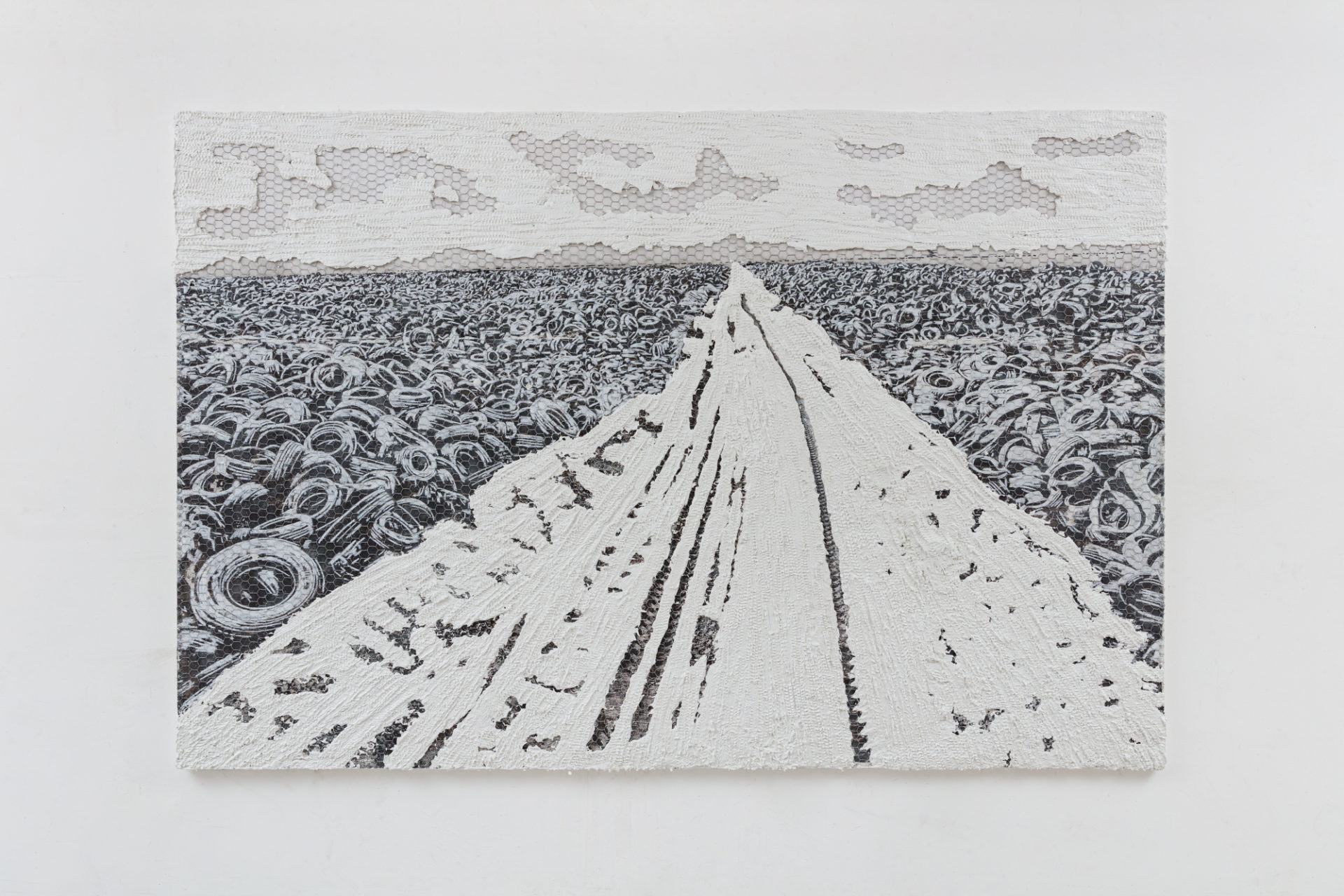Essay on the end of the world

Décimo
, 2022Essay on the end of the world
This is the dead land
This is the land of cacti
Here the stone images
They are created, here they receive
The pleading of a dead man’s hand
Under the glare of a disappearing star.
T S Eliot – The hollow men
Indignation is the keynote of these paintings by Marina Hachem, hence the option for black and variations of white and gray, the appropriate shades for the realization of hideous, steamy and stinking landscapes such as the Pantanal, which since last year has been coming to us through the television images, with the charred corpses of animals fallen at the end of an endless flight. They didn’t know it, but we, oh we who set the trap, have always known, though most want to forget. But not Marina who, diverging from those who perpetually celebrate the colors of nature, produces an exhibition that is a requiem; a space devoted to silence in honor of the dead, especially those who died early without even suspecting it.
According to Marina’s recent paintings, in her second individual exhibition, entitled Essay on the End of the World, the proof of destruction is not just there in the Pantanal, in the distant Amazon Forest, in the melting ice of even more distant Greenland, or in the Círculo Arctic, where the progressive disappearance of the tundra has been taking place, among other sites and phenomena as distant as they are intangible (by the way, as the Inocentes of Leblon, the alienated targets of Drummond’s poetry, would say, someone there went to the North Pole to check if it is really happening an environmental disaster? isn’t all this horror divulged by the press, the vaunted climatic imbalance a paranoid fantasy of science with a string of theories designed to instil panic in delicate spirits? pesticides, transgenic foods, sprays responsible for widening the hole in the ozone layer, etc?).

Vigésima
, 2020
Décimo Quinto
, 2022
Décimo sétimo
, 2022
SEGUNDO
, 2020
Sexto
, 2020
Nono
, 2020
Sétimo
, 2019Because the proof of all this, as Marina Hachem demonstrates, is here, glued to us, residents of big cities, personified in dumps and sanitary landfills, immensely high and extensive dunghills, these punctuated by the permanent flames of methane burning, configuring an immense stove with mouths wide open to the open sky, among the other gases released by the decomposition of garbage. Those, fruits of leftovers from homes, industries and hospitals, have their waste disputed by hungry people, while they contaminate the water, the air, the ground and, further down, comes the power of the slurry, the thick and dark liquid derived from the decay of organic matter, poisoning the water table, rainwater filtered through the surface layers of the soil, sweetly asleep.
In Brazil, according to recent data (2020) from the Urban Cleaning Sustainability Index, 49.9% of Brazilian municipalities dump waste in dumps, while 17.8 million Brazilians do not even have garbage collected in their homes.
The common denominator of most of these paintings is a particular type of Dump: tire cemeteries. The artist was marked by the large photographs of the Canadian Edward Burtynsky, taken in 1999, in Westley, California. For years Burtynsky has been producing images about the landscape of the industrial world, with the same accuracy and eloquence with which Ansel Adams, one of his essential sources, approached the nature of North American national parks. In her survey of the human impact on nature, tire cemeteries, as concluded by Marina’s research, are a must, given the catastrophic burning that took place in 2021 at the largest tire cemetery in the world, in Kuwait -between forty-two and fifty million (sources differ as to the number) scattered and piled up over three miles.
Marina appropriates and transfers these images to canvas, cutting them out, changing their framing, enlarging some of their details or even reducing their dimensions as true infestations, which strictly speaking are effective in condemning the soil to infertility and death. Transferred using black oil pastel, the images from the photographs were partially covered by layers of white and gray cement, added to the base of wire mesh (like chicken coops), a technique similar to that used for the production of reinforced concrete. The layers, similar to torrential flows, waterfalls, craters or even submerged portions, similar to swamps, are created with flat and hard brushes, spatulas or even directly with fingers. The result is always rough, crisp, convulsive, all the more so because, at least in the portion of paintings with the presence of cement masses, the wire mesh overlaps the images, contributing to an atmosphere permeated by enclosure; imprisoned landscapes. Are they paintings or walls? A question that cannot be resolved. Seen from above, as through an airplane window, or from the ground, between the valleys made by the slopes of tires, the landscapes have no depth, they lack horizons, distances.
Consisting exclusively of tyres, these paintings inevitably lead us to think about the reason for their existence, in their condition as one of the main, most resistant residues of the automobile industry, the sign par excellence of the 20th century and which enters our century cynically wearing a new cover of justifications. Meanwhile, defends our artist, the young Marina Hachem, man is efficiently rehearsing the end of his world.
Agnaldo Farias

Décima nona
, 2020
Primeiro
, 2020
Terceiro
, 2020
Décimo Primeiro
, 2022
Oitavo
, 2019Marina Hachem
1993, São Paulo, Brasil.
Graduated in Visual Arts from Fundação Armando Alvares Penteado, she also studied at Central Saint Martins, in London. Her production transits between drawing, painting, object, sculpture and installation.
She participated in collective exhibitions such as Mil e Uma (São Paulo) and Et tu, Art Brute? (New York); and had the individual Entrelinha, in 2016, at the ArteHall gallery, São Paulo. In 2019, she developed the SVA residency program in New York.


